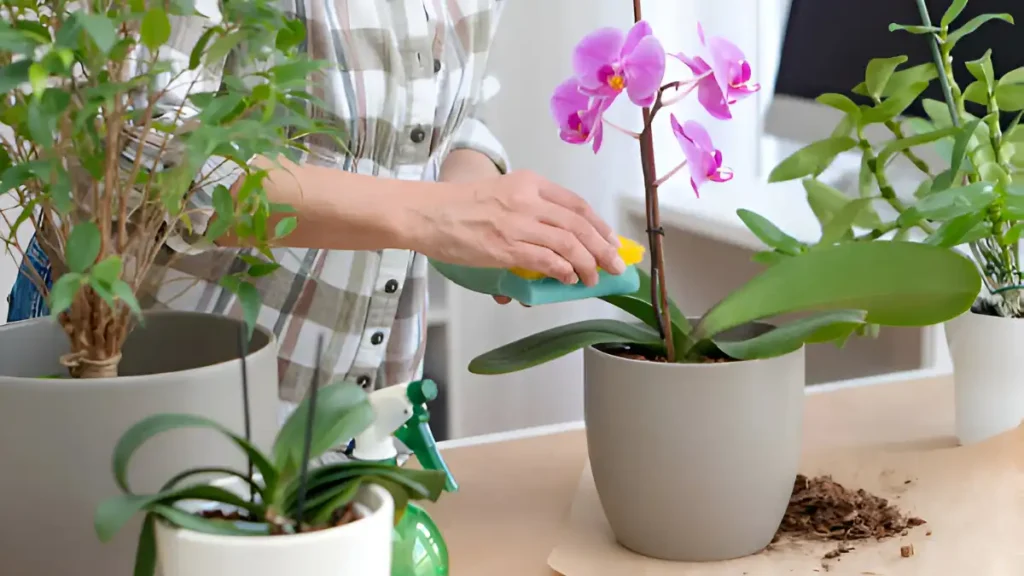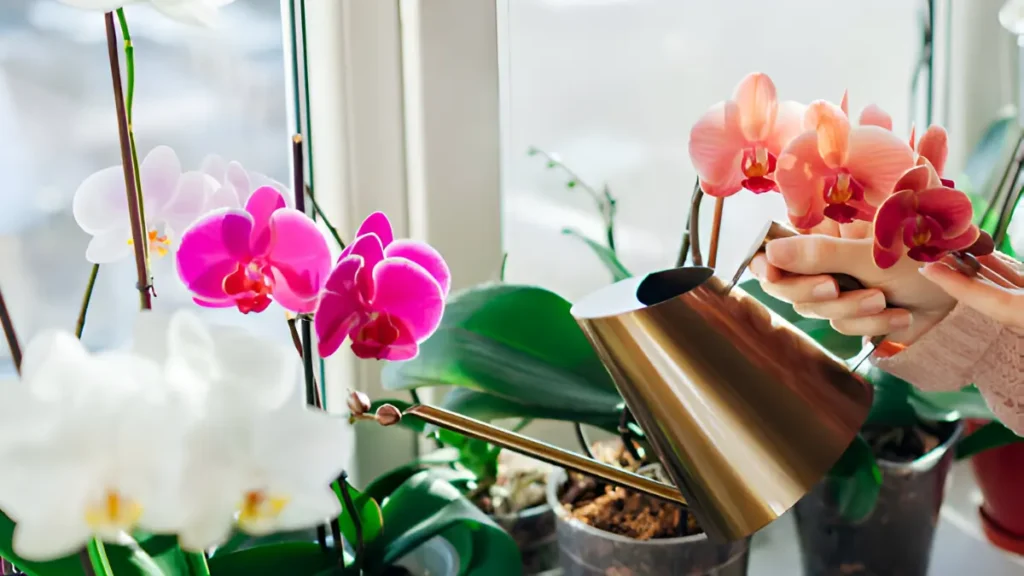Renowned for their varied species and exquisite flowers, orchids are considered to be some of the most exotic and beautiful flowering plants. These gorgeous indoor plants may flourish with the right care, bringing a sense of refinement to any area. Whether you’re a seasoned plant enthusiast or a newbie trying to grow your first orchid, this book will offer you the most important ideas and strategies for indoor orchid care.
Recognizing the fundamentals of orchids:
With over 25,000 species and over 100,000 hybrids, orchids are members of one of the largest plant families. The majority of orchids have similar care needs despite their diversity. Replicating their native habitat as precisely as possible is essential to good orchid care.
Orchid care instructions:
Lighting requirements for orchids
Instead of direct sunshine, which may scorch their leaves, orchids prefer brilliant, indirect light. They like windows that face east or west, with grow lights added if needed. While orchids in bright light require direct light, those in low light require filtered light. Orchids with a medium light level require a moderate area, such as a filtered position close to a south-facing window or near glass in a west-facing window.
Ideal temperature for proper orchid care
The ideal temperature range for orchids is 60–80°F (15–27°C). In order to replicate their native environment, they prefer a dip in temperature at night. But orchids that grow cool, like Cymbidium and Dendrobium, need temperatures of at least 50°F (10°C) at night and 60–70°F (15–21°C) during the day. Cattleya, Oncidium, and Paphiopedilum are examples of intermediate-growing orchids that require daytime temperatures of 65–75°F (18–24°C) and nighttime temperatures of at least 55°F (12°C). Warm-growing orchids, such as Phalaenopsis and Vanda, like temperatures between 70–85°F during the day and 60°F at night and in the winter. Sustaining the right humidity level is also essential. Generally speaking, orchids need 50–70% humidity. By utilizing a humidifier, keeping a tray of water close to the plants, or often misting the leaves, you can raise the humidity in the air.
Watering and feeding
In orchid care, overwatering is a common error. In between waterings, most orchids prefer to become slightly dry. To avoid root rot, give your orchids a good irrigation, making sure the water runs out entirely. Watering your plants once a week should be plenty, depending on the conditions of your home. Softened water includes salts that can damage plants, so use room temperature water instead.
A balanced fertilizer that is soluble in water is needed to feed orchids. Employ a fertilizer made especially for orchids; during the growing season, this fertilizer should be administered every two weeks; during the dormant season, it should be applied less frequently. For the proper dilution and application, according to the fertilizer package directions.

Potting and repotting orchid
Usually, orchids are grown in specific orchid pots that have lots of holes for drainage. Make use of a well-draining orchid potting mix, typically made up of sphagnum moss, perlite, and bark. To guarantee strong root development, repot your orchid every one to two years or when the potting medium degrades. Repotting is best done after the orchid has completed its flowering cycle.
Maintenance and pruning
It takes routine care to maintain the health of your orchid. To promote new development, remove any dead or yellowing leaves and clip spent flower spikes. Keep an eye out for pests like mealybugs, aphids, and spider mites on your orchids. If you find any infestations, treat them right away with neem oil or insecticidal soap.
Conclusion:
In conclusion, you may create the ideal atmosphere for your orchids and encourage growth and blooming by following these orchid care tips. Because orchids can be sensitive to changes in their surroundings, patience and attention to detail are essential. Indoor orchids may provide enduring elegance and beauty to your home with the right maintenance.
Certainly! If you’d like to learn more, please consider following our WhatsApp Channel: Harvest Gardening
A frequently asked questions:
Q1: How to make orchids rebloom step by step?
A1: In order for orchids to rebloom, they need bright, indirect light, a monthly application of balanced fertilizer, and a nightly temperature decrease of 10-15°F. To promote new growth, cut the spent flower spike after the flowering cycle.
Q2: How to orchid care after flowering?
A2: When an orchid is done flowering, remove the spent flower spike, give it a little water, give it some indirect sunshine, and make sure the environment is humid enough to promote new growth.
Q3: What is the keiki method for propagating orchids?
A3: Growing a new plant from a little offshoot, called a “keiki,” that grows on the stem of an orchid is known as the keiki method. The keiki can be gently removed and potted individually once it has established multiple roots that are about 2-3 inches long.



